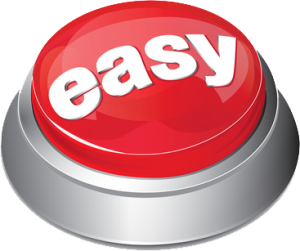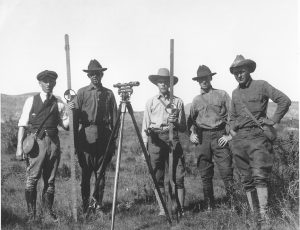 Conservation is in desperate need of the Easy Button. We can never hope to mainstream conservation if we can’t figure out how to build the Easy Button.
Conservation is in desperate need of the Easy Button. We can never hope to mainstream conservation if we can’t figure out how to build the Easy Button.
Conservation is complicated. There is sheet & rill erosion, ephemeral erosion, nitrogen leaching, soluble phosphorus, insoluble phosphorus, greenhouse gases, denitrification, and so much more. The issues can make the head spin of even a learned conservationist. From this complicated perspective it seems it is impossible to scale conservation. It takes too long to learn the trade and there is no simple way of doing getting it done.
If you have read any blog posts, you know that I strongly believe that the delivery of soil and water conservation services has to move beyond government and NGOs. The private sector must begin providing these services directly to farmers. However the big question remains, “what will it take to engage the private sector?” To that, I think the answer is simple. They need the Easy Button. Instead of operating hard-to-use models and design methods with complex databases, ag retailers need software that empowers agronomists to help farmers. They need a process that is easy and bullet proof.

Department of the Interior
My first job out of college was with USDA’s Soil Conservation Service in Jackson County, Iowa. It was there that I received my first training in conservation survey and design. From the very first day I was indoctrinated in the use of the transit and stadia method for surveying terraces. It took a lot of hard work to become good at transit and stadia survey. In those early years, I took the task of learning this method seriously. I was especially proud of my talent because most conservationists never learned this process, and more importantly I was good at it. While in Jackson County I felt like I had developed a career skill that put me in an elite class.
Then things turned upside down for me. From Jackson County I moved to Woodbury County on the other side of Iowa. Woodbury County built 300,000 feet of terraces, up 10 fold from the 30,000 feet of terraces built in Jackson County. In Woodbury County, they did things differently. They had a shortcut for designing terraces that took a fraction of the time.
Initially I rationalized this shortcut method must be inferior. How could it be as good? There was no real talent or skill involved. In reality, I hated that my specialized talent was traded in for the Easy Button. It was only over time I admitted, to myself, that my skill in transit and stadia surveying was out of date. Using the methodology I learned in Jackson County actually hampered conservation adoption. I learned the Easy Button put more conservation on the ground. Wow, this was really hard on my ego; I learned that being a part of this elite crowd no longer had value.
I think most conservationists enjoy being a part of an elite crowd. They have mastered a skill that others don’t have. It sets them apart, and therefore it prevents them from looking for the Easy Button. I am not suggesting this is a deliberate act. But if someone develops the Easy Button it means losing prestige and importance, and who wants to be “the replaceable person”? I learned my lesson. I realize the Easy Button means mainstreaming conservation in the private sector.
Being the leading supplier of sustainable technology to ag retailers, I am dedicated to advancing the Easy Button for delivering soil and water conservation services directly to farmers. I understand that in order for private businesses to offer sustainable solutions to farmers the complexity and time requirements need to be cut significantly. There’s got to be a better way.

The “Easy Button” is certainly “disruptive innovation”. I think the term “disruptive innovation” is a bit misleading as it becomes the opposite of disruption for those that find the new system cost-effective and easier to use. To those it becomes un-disruptive innovation.
Hard on the ego, but so true!!!
Great blog Tom (good comment Tim). Me, being me, would add “Easy Button” verification of Easy Button practice operation and maintenance over time as needed to provide expected (and “claimed” by the state for wq) benefits. May be “disruptive accountability” but need to understand why we are, or are not, seeing expected benefits over time. Policy makers and citizens are getting big on need for this.
I agree we need to start doing a better job of tracking results and expected benefits. Even agencies fail to do this at any meaningful level. This is the high on our priority list of upcoming things.